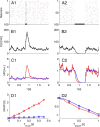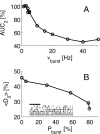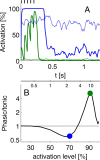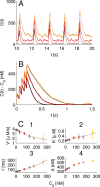Influence of phasic and tonic dopamine release on receptor activation
- PMID: 20962248
- PMCID: PMC6634758
- DOI: 10.1523/JNEUROSCI.1894-10.2010
Influence of phasic and tonic dopamine release on receptor activation
Abstract
Tonic and phasic dopamine release is implicated in learning, motivation, and motor functions. However, the relationship between spike patterns in dopaminergic neurons, the extracellular concentration of dopamine, and activation of dopamine receptors remains unresolved. In the present study, we develop a computational model of dopamine signaling that give insight into the relationship between the dynamics of release and occupancy of D(1) and D(2) receptors. The model is derived from first principles using experimental data. It has no free parameters and offers unbiased estimation of the boundaries of dopaminergic volume transmission. Bursts primarily increase occupancy of D(1) receptors, whereas pauses translate into low occupancy of D(1) and D(2) receptors. Phasic firing patterns, composed of bursts and pauses, reduce the average D(2) receptor occupancy and increase average D(1) receptor occupancy compared with equivalent tonic firing. Receptor occupancy is crucially dependent on synchrony and the balance between tonic and phasic firing modes. Our results provide quantitative insight in the dynamics of volume transmission and complement experimental data obtained with electrophysiology, positron emission tomography, microdialysis, amperometry, and voltammetry.
Figures







References
-
- Adams RN. In vivo electrochemical measurements in the CNS. Prog Neurobiol. 1990;35:297–311. - PubMed
-
- Anstrom KK, Woodward DJ. Restraint increases dopaminergic burst firing in awake rats. Neuropsychopharmacology. 2005;30:1832–1840. - PubMed
-
- Arbuthnott GW, Wickens J. Space, time and dopamine. Trends Neurosci. 2007;30:62–69. - PubMed
-
- Atkins PW, De Paula J. Ed 7. New York: Freeman; 2002. Physical chemistry.
Publication types
MeSH terms
Substances
LinkOut - more resources
Full Text Sources
